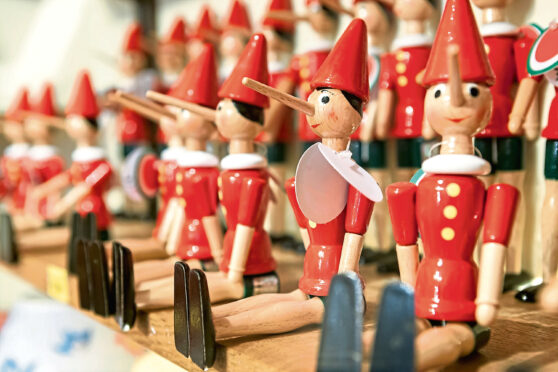
From little white lies and untruths to cons, hoaxes and history-changing indiscretions, lying has always been an inherent part of human nature – even Julius Caesar told some whoppers!
Here, author Natasha Tidd tells Alice Hinds the Honest Truth about the history of lying.
What made you interested in researching lies?
Lying is one of those universal things that’s inherently part of human nature but we know we shouldn’t do – even though we still might.
Looking at history through this lens was a great chance to explore the other side of stories and moments we think we know so well, finding hidden cover-ups, roots of conspiracy theories and propaganda wars, as well as tracing back lies that happened centuries ago, yet still impact our lives today.
Do you have a favourite historical lie?
My favourite part of the book is around the creation of what we today call “fake news”. What seems like a very modern creation actually has its roots well back to the early 1800s when newspapers began printing hoax stories to boost their readership, the most famous of these being 1835’s Great Moon Hoax. A New York paper claimed life had been found on the moon, consisting of man-bats and unicorns.
Some really famous writers, like Edgar Allan Poe and Mark Twain, actually cut their teeth helping to create these hoaxes but very quickly we see hoax news snowball into something much darker.
Within 30 years, in America, these stories are being used in attempts to sway elections and prevent emancipation. And by the end of the 1800s we reach a point where fake news can help spark war and has become a major part of political play.
You say Julius Caesar invented spin – why?
Beginning around 58 BC, Caesar began publishing a series of reports of his successes in the Gallic War, called Commentaries On The Gallic War. For almost 2,000 years, this was seen as one of the best war reports in history until the mid-20th Century when, thanks to modern research techniques, historians discovered that most of Caesar’s claims were lies.
Caesar was padding out his wins and bending the truth substantially to justify any wrongdoing, making this one of the earliest examples of political spin that we know of.
Who was Gregor MacGregor?
He was a Scottish-born fraudster who invented his own island paradise. Whilst working as a mercenary during the Spanish-American wars of independence he came across a swathe of uninhabitable land on the Mosquito Coast and claimed it as his own. He then went back to Britain where he cashed in on people’s colonist dreams, by selling his newfound land of “Poyais” as a tropical utopia.
With offices in Edinburgh and London he soon sold off the land to would-be settlers and even arranged ships to send them to Poyais. When the settlers landed in 1823 a hurricane left them marooned, with several ultimately dying before rescue came. MacGregor fled before he could be punished, reappearing a few years later in France where he mounted the scam again.
Why did lies make the Chernobyl disaster inevitable?
Nuclear power was tantamount to the success of the USSR. To hold on to power during the Cold War, they needed to show their people and the world at large that they had a grip on nuclear arms and technology, and so it was better to hide any accidents than admit to them.
For example, in 1957 there was a massive chemical explosion at a top-secret plutonium production site in Mayak, which was so well covered up that its effects weren’t fully realised until the fall of the USSR in 1991.
When Chernobyl’s plant was being built, corners were continuously cut, meaning an accident was inevitable. In fact, a month prior to the Chernobyl disaster, Ukrainian journalist Lyubov Kovalevskaya published an expose of the numerous safety issues that were being covered up at the plant but officials cited her claims as lies.
Is there ever such a thing as a good lie?
That’s something everyone has to decide for themselves. White lies can certainly be good, whether that’s creating magic and wonder for a child or sparing someone’s feelings at a tough time. Yet, on the whole, lying tends to be destructive so it’s a tricky line to walk.
A Short History Of The World In 50 Lies, published by Michael O’Mara Books, out now

Enjoy the convenience of having The Sunday Post delivered as a digital ePaper straight to your smartphone, tablet or computer.
Subscribe for only £5.49 a month and enjoy all the benefits of the printed paper as a digital replica.
Subscribe